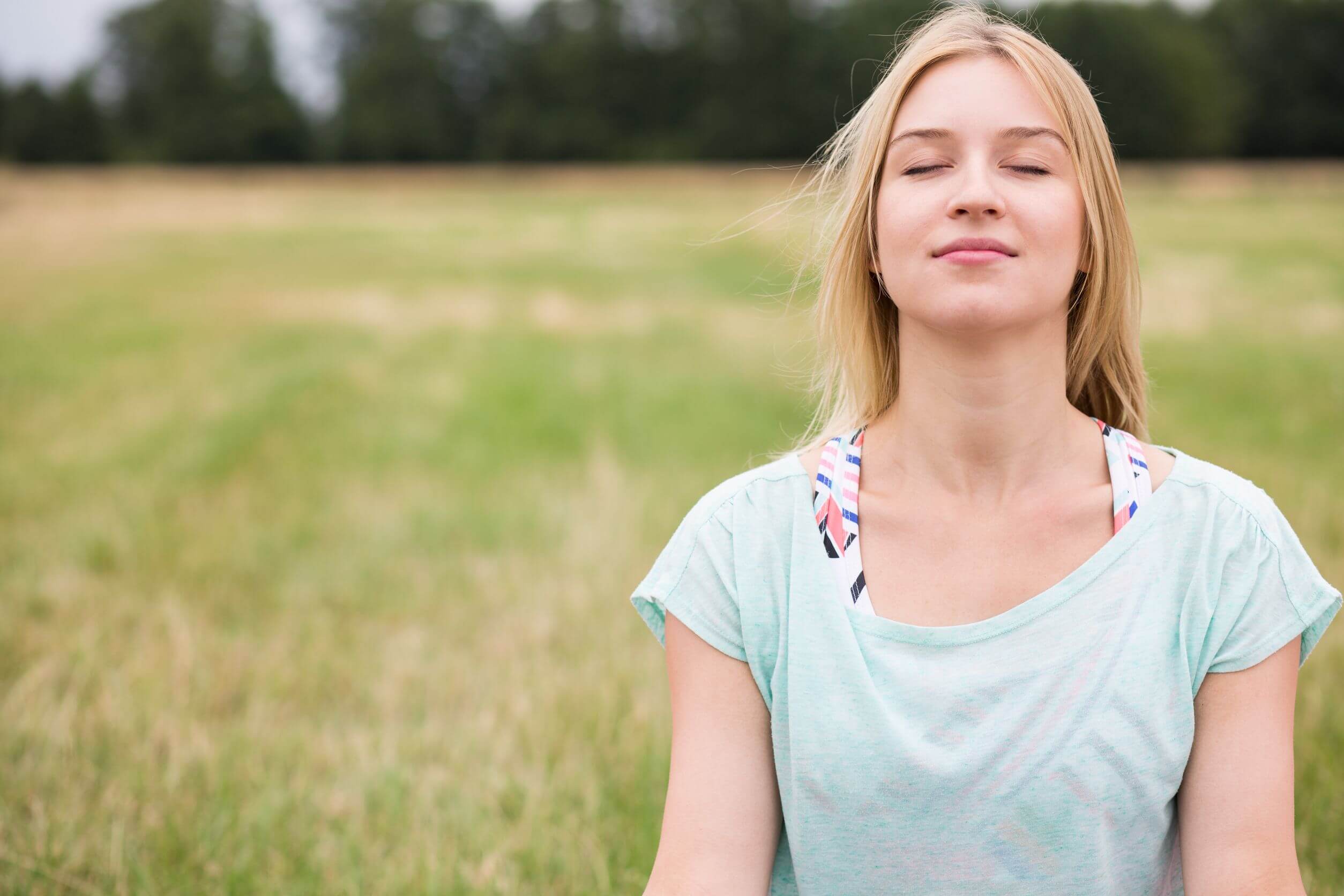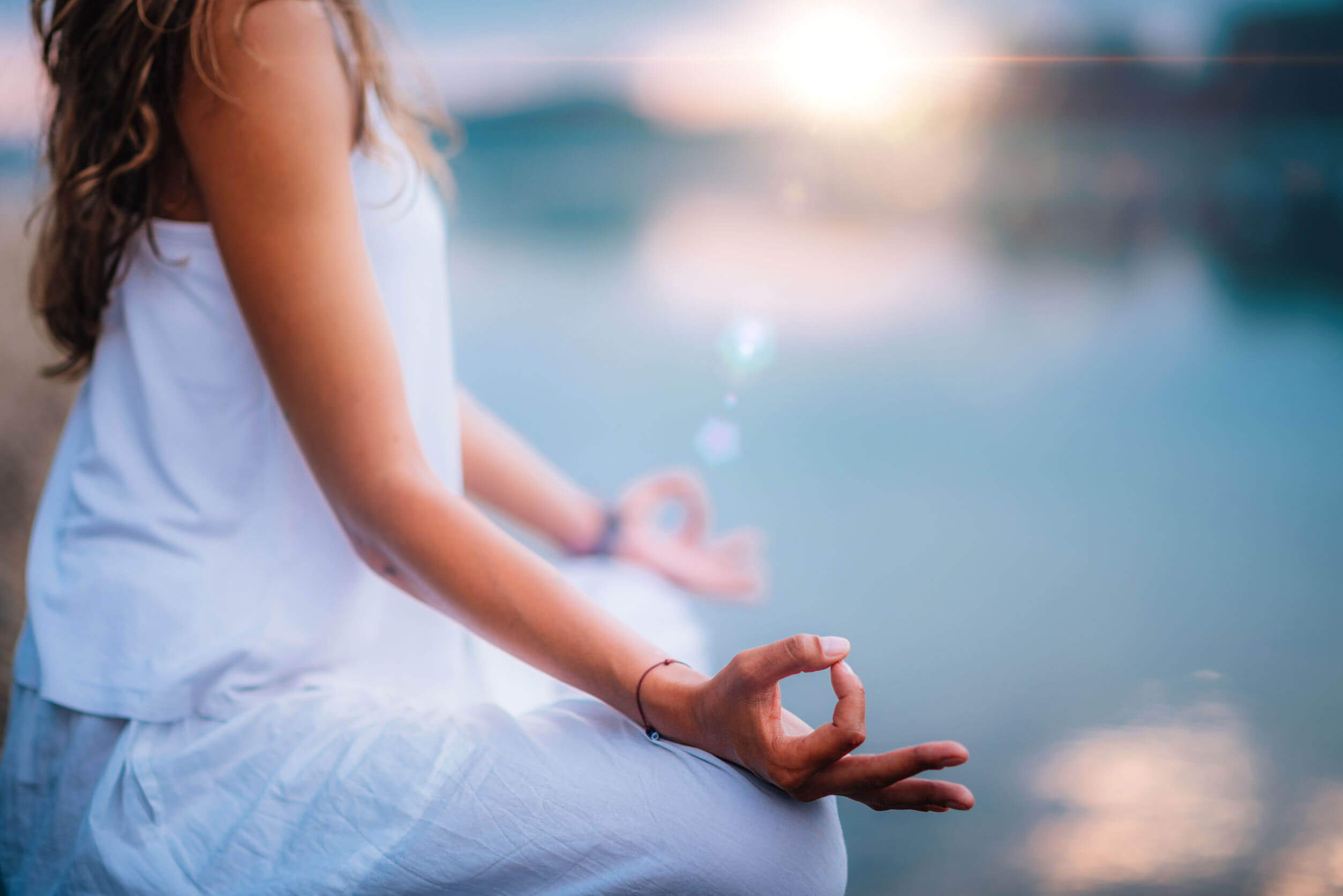5 Visualization Techniques

Even without knowing it, many of us already practice visualization. However, what often happens is that we don’t know enough about visualization techniques in order to focus those thoughts well.
So, how do we practice visualization unconsciously? When, at some point in the day, you imagine yourself in the future, either in a positive or negative way, you’re actually visualizing yourself unconsciously.
The trick lies in learning how to do it consciously in order to attract positive things, and, for this reason, we have visualization techniques. The origins of visualization can be traced to both the ancient Greeks and Eastern shamans. As for its use in modern times, it was documented by Breuer and Freud in their book Studies on Hysteria, published in 1895.
It was in 1971 when Carl Simonton, the oncologist and medical director of the Texas Cancer Research and Council Center, identified that some of his patients were overcoming their disease and others weren’t, despite having the same diagnosis. Seeing that the difference was in their attitude, he decided to address these beliefs as a visualization technique in which patients saw themselves winning the battle against their tumor.
The 5 visualization techniques
As we mentioned before, we all use visualization without realizing it. The downside of this is that it is easier for us to be overcome by anxiety and negativism in those moments. To avoid negative effects there are visualization techniques or the so-called guided imagery techniques.
1. Creative visualization technique

All human beings have great creative capacity. However, many don’t know how to channel it. This technique, pioneered by Shakti Gawain, proposes that we use our ability to imagine in order to represent what we really want for our life in a clear and positive way, just as we want it to happen.
This creative visualization of our life can have a physical, emotional, mental, or spiritual purpose, depending on our own particular desire. We’ll tell you how you can put it into practice:
- Choose a quiet place to sit or lie down. If you practice yoga or some other method of meditation, always use the same place.
- You need to be mentally and physically relaxed.
- Once you are in a state of mindfulness, imagine what you want for your life. Let your creativity help you to visualize yourself as you really want to be, but always in a positive way.
- Take all the time you need to see yourself in the future, and don’t restrict yourself in any way with your creative or imaginative capacity.
- Visualize yourself over and over again, don’t be afraid or prejudiced.
2. Tension and strain technique
This technique is very useful when there’s something stressful in your body or mind which needs to be relaxed. Studies have reviewed the use of this technique in athletes, due to the muscular tension they’re subjected to on a daily basis. This is how you should put it into practice:
- Identify a position that creates physical and mental comfort for you.
- Close your eyes and identify what’s causing you tension, imagine the shape it could have, and associate it with something to identify it.
- Now, you must imagine how that tension increases through the shape you have given it, like a rope knot that you can tighten.
- Then, release that knot and visualize how the tension is released, generating a feeling of well-being.
- Internalize that well-being and visualize how the tension that was in your body or mind is healed.
3. Double pane window technique
The double pane technique is very useful when you have had a busy day, you’re tired and when your thoughts are overwhelming you. You know what we’re talking about, right?! So, keep these tips in mind to put this visualization technique into practice:
- Lying on your bed, try to relax your body and imagine a double pane window. On one side you are trying to rest, while on the other you see a group of people arguing loudly.
- Now, imagine that you get out of bed, observe the people, and, as calmly as possible close the window. Feel how you are now isolated from the sound and everything is completely silent.
- With everything quiet, go back to bed, lie back, and enjoy that silence. Then imagine how you can sleep soundly, without fatigue and without anything to disturb you.
4. Technique of liquid silence
Have you had a day full of negative thoughts that overwhelm you and keep you from getting on with your tasks? We’ve all gone through days like this, where our minds don’t shut up and don’t allow us to focus our thoughts.
On days like these, apply this visualization technique and feel your thoughts subside and how they stop hindering your flow. This is how you should put it into practice:
- Give a liquid state to the calm and stillness that you want to achieve. Also visualize it with a color that you consider beautiful and which evokes tranquility for you.
- Visualize how this liquid begins to fill your head and provide you with a feeling of peace and tranquility.
- Now, visualize how that liquid begins to permeate through your head and throughout your body: it slowly moves down your shoulders, arms, hands, back, abdomen, hips, legs and feet.
- As you see yourself bathed in peace and quiet, take a deep breath and hold your breath. Exhale calmly and repeat for several minutes.
- Feel how, little by little, your intrusive thoughts fall silent and allow you to keep your mind focused on that image of you in complete calm.
5. Serene beach scene technique
When fear and insecurity take over our minds and bodies, nothing seems to go right. Also, it’s easy to let our minds focus on the negative things and begin to visualize ourselves that way. It’s at that moment that you should use this technique. Don’t let anxiety and insecurity win you over!
- Try to relax your body and close your eyes.
- Imagine a huge beach with sparkling white sand. The sky that merges with the sea is blue and you can only hear the waves hitting the shore.
- Now, you’re sitting in a comfortable chair in the middle of that beach where the sun and the sand warm your skin and your feet. What a wonderful sensation!
- Enjoy the view of the sea from the chair. Feel how that blue color embraces you and inhale the aroma of the sea and how the cold and warm breezes touch your face at the same time.
- Can you hear the waves of the sea? Breathe in their rhythm and release the tension that you’re feeling. Visualize your peace and quiet.
Visualization techniques and their relationship with meditation

As you can see, visualization techniques are closely related to meditation. In addition to helping you visualize good things for your life on a physical and mental level, they aim to increase your ability to reflect.
In fact, as we mentioned, these techniques work very well in association with a meditation method such as mindfulness.
This is because you must have a high level of concentration. What’s more, a study revealed that meditating modifies the neural network that’s associated with mental distraction. This is responsible for stimulating the brain regions that reduce distracting activity.
In addition to this, other research showed that meditating increases positive emotions, which makes it easier for you to imagine good and positive things for your life through visualization techniques.
Practice visualization techniques patiently
The first time you try any of these visualization techniques, you may not be able to relax your mind enough to visualize what you want. However, you shouldn’t give up. Try to be patient and don’t stop thinking about all the good things you want to achieve.
Even without knowing it, many of us already practice visualization. However, what often happens is that we don’t know enough about visualization techniques in order to focus those thoughts well.
So, how do we practice visualization unconsciously? When, at some point in the day, you imagine yourself in the future, either in a positive or negative way, you’re actually visualizing yourself unconsciously.
The trick lies in learning how to do it consciously in order to attract positive things, and, for this reason, we have visualization techniques. The origins of visualization can be traced to both the ancient Greeks and Eastern shamans. As for its use in modern times, it was documented by Breuer and Freud in their book Studies on Hysteria, published in 1895.
It was in 1971 when Carl Simonton, the oncologist and medical director of the Texas Cancer Research and Council Center, identified that some of his patients were overcoming their disease and others weren’t, despite having the same diagnosis. Seeing that the difference was in their attitude, he decided to address these beliefs as a visualization technique in which patients saw themselves winning the battle against their tumor.
The 5 visualization techniques
As we mentioned before, we all use visualization without realizing it. The downside of this is that it is easier for us to be overcome by anxiety and negativism in those moments. To avoid negative effects there are visualization techniques or the so-called guided imagery techniques.
1. Creative visualization technique

All human beings have great creative capacity. However, many don’t know how to channel it. This technique, pioneered by Shakti Gawain, proposes that we use our ability to imagine in order to represent what we really want for our life in a clear and positive way, just as we want it to happen.
This creative visualization of our life can have a physical, emotional, mental, or spiritual purpose, depending on our own particular desire. We’ll tell you how you can put it into practice:
- Choose a quiet place to sit or lie down. If you practice yoga or some other method of meditation, always use the same place.
- You need to be mentally and physically relaxed.
- Once you are in a state of mindfulness, imagine what you want for your life. Let your creativity help you to visualize yourself as you really want to be, but always in a positive way.
- Take all the time you need to see yourself in the future, and don’t restrict yourself in any way with your creative or imaginative capacity.
- Visualize yourself over and over again, don’t be afraid or prejudiced.
2. Tension and strain technique
This technique is very useful when there’s something stressful in your body or mind which needs to be relaxed. Studies have reviewed the use of this technique in athletes, due to the muscular tension they’re subjected to on a daily basis. This is how you should put it into practice:
- Identify a position that creates physical and mental comfort for you.
- Close your eyes and identify what’s causing you tension, imagine the shape it could have, and associate it with something to identify it.
- Now, you must imagine how that tension increases through the shape you have given it, like a rope knot that you can tighten.
- Then, release that knot and visualize how the tension is released, generating a feeling of well-being.
- Internalize that well-being and visualize how the tension that was in your body or mind is healed.
3. Double pane window technique
The double pane technique is very useful when you have had a busy day, you’re tired and when your thoughts are overwhelming you. You know what we’re talking about, right?! So, keep these tips in mind to put this visualization technique into practice:
- Lying on your bed, try to relax your body and imagine a double pane window. On one side you are trying to rest, while on the other you see a group of people arguing loudly.
- Now, imagine that you get out of bed, observe the people, and, as calmly as possible close the window. Feel how you are now isolated from the sound and everything is completely silent.
- With everything quiet, go back to bed, lie back, and enjoy that silence. Then imagine how you can sleep soundly, without fatigue and without anything to disturb you.
4. Technique of liquid silence
Have you had a day full of negative thoughts that overwhelm you and keep you from getting on with your tasks? We’ve all gone through days like this, where our minds don’t shut up and don’t allow us to focus our thoughts.
On days like these, apply this visualization technique and feel your thoughts subside and how they stop hindering your flow. This is how you should put it into practice:
- Give a liquid state to the calm and stillness that you want to achieve. Also visualize it with a color that you consider beautiful and which evokes tranquility for you.
- Visualize how this liquid begins to fill your head and provide you with a feeling of peace and tranquility.
- Now, visualize how that liquid begins to permeate through your head and throughout your body: it slowly moves down your shoulders, arms, hands, back, abdomen, hips, legs and feet.
- As you see yourself bathed in peace and quiet, take a deep breath and hold your breath. Exhale calmly and repeat for several minutes.
- Feel how, little by little, your intrusive thoughts fall silent and allow you to keep your mind focused on that image of you in complete calm.
5. Serene beach scene technique
When fear and insecurity take over our minds and bodies, nothing seems to go right. Also, it’s easy to let our minds focus on the negative things and begin to visualize ourselves that way. It’s at that moment that you should use this technique. Don’t let anxiety and insecurity win you over!
- Try to relax your body and close your eyes.
- Imagine a huge beach with sparkling white sand. The sky that merges with the sea is blue and you can only hear the waves hitting the shore.
- Now, you’re sitting in a comfortable chair in the middle of that beach where the sun and the sand warm your skin and your feet. What a wonderful sensation!
- Enjoy the view of the sea from the chair. Feel how that blue color embraces you and inhale the aroma of the sea and how the cold and warm breezes touch your face at the same time.
- Can you hear the waves of the sea? Breathe in their rhythm and release the tension that you’re feeling. Visualize your peace and quiet.
Visualization techniques and their relationship with meditation

As you can see, visualization techniques are closely related to meditation. In addition to helping you visualize good things for your life on a physical and mental level, they aim to increase your ability to reflect.
In fact, as we mentioned, these techniques work very well in association with a meditation method such as mindfulness.
This is because you must have a high level of concentration. What’s more, a study revealed that meditating modifies the neural network that’s associated with mental distraction. This is responsible for stimulating the brain regions that reduce distracting activity.
In addition to this, other research showed that meditating increases positive emotions, which makes it easier for you to imagine good and positive things for your life through visualization techniques.
Practice visualization techniques patiently
The first time you try any of these visualization techniques, you may not be able to relax your mind enough to visualize what you want. However, you shouldn’t give up. Try to be patient and don’t stop thinking about all the good things you want to achieve.
- Valiente, María. El uso de la visualización en el tratamiento psicológico de enfermos de cáncer. Psicooncología. Vol. 3. Núm. 1, 2006. pp. 19-34. Disponible en: https://seom.org/seomcms/images/stories/recursos/sociosyprofs/documentacion/psicooncologia/numero1_vol3/articulo2.pdf
- Shakti Gawain. Visualización creativa. 1978. Disponible en: https://docenteslibresmdq.files.wordpress.com/2009/11/visualizacion-creativa-shakti-gawain.pdf
- Rodríguez Rodríguez, Teresa, & García Rodríguez, Clara Marta, & Cruz Pérez, Ramón (2005). Técnicas de relajación y autocontrol emocional.. MediSur, 3(3),55-70.[fecha de Consulta 13 de Marzo de 2021]. ISSN: . Disponible en: https://www.redalyc.org/articulo.oa?id=1800/180019787003
- Judson A. Brewer, Patrick D. Worhunsky, Jeremy R. Gray, Yi-Yuan Tang, Jochen Weber, and Hedy Kober. Meditation experience is associated with differences in default mode network activity and connectivity. PNAS, 2011 108 (50) 20254-20259; https://doi.org/10.1073/pnas.1112029108.
- Fredrickson, B. L., Cohn, M. A., Coffey, K. A., Pek, J., & Finkel, S. M. (2008). Open hearts build lives: Positive emotions, induced through loving-kindness meditation, build consequential personal resources. Journal of Personality and Social Psychology, 95(5), 1045–1062. https://doi.org/10.1037/a0013262
Este texto se ofrece únicamente con propósitos informativos y no reemplaza la consulta con un profesional. Ante dudas, consulta a tu especialista.







